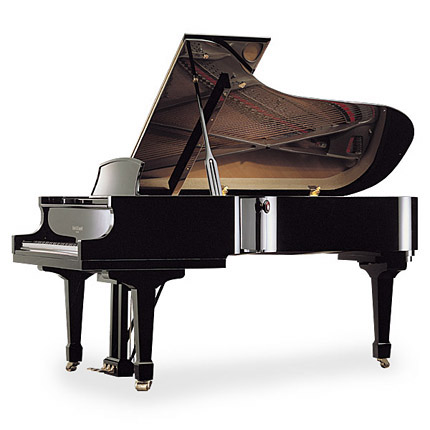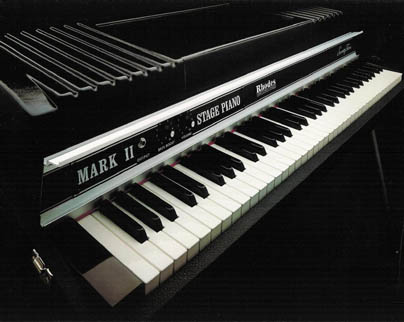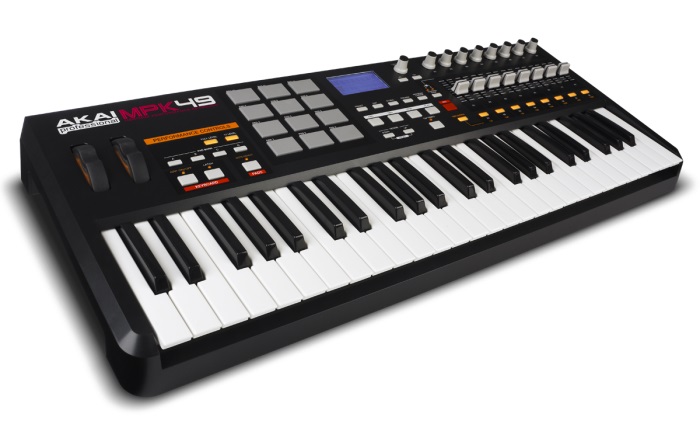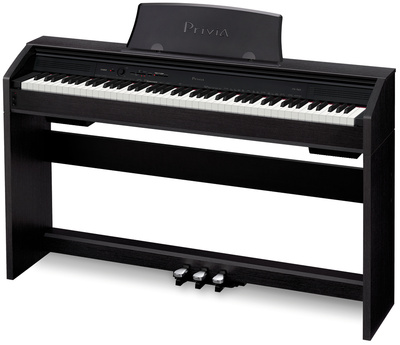 Manufacturers of digital pianos (such as Casio, Yamaha, Roland and Korg) seek to emulate the feel of an acoustic piano. With an accoustic piano, a hammer strikes one, two or three strings (depending on the pitch of the string) causing the string to vibrate and make a noise (a note). The hammer is connected to the key by a lever type system and this causes a natural weight or resistance to each key. Obviously, in an electronic keyboard or digital piano there is no need for this mechanical device.
Manufacturers of digital pianos (such as Casio, Yamaha, Roland and Korg) seek to emulate the feel of an acoustic piano. With an accoustic piano, a hammer strikes one, two or three strings (depending on the pitch of the string) causing the string to vibrate and make a noise (a note). The hammer is connected to the key by a lever type system and this causes a natural weight or resistance to each key. Obviously, in an electronic keyboard or digital piano there is no need for this mechanical device.
As I noted in a previous post on digital pianos, the ultimate goal is to have the experience of playing the real thing. But, which real thing do you try to emulate?
Not all acoustic pianos “feel” the same. A studio upright will feel different from a baby grand which will feel different from a concert grand. To add to that, each manufacturer of similar size pianos will have their own feel which may or may not even be consistent across the line.
 In addition to accoustic pianos, there are stage keyboards such as Rhodes, Wurlitzers and Yamaha Electric Stage Grands. Those have completely different mechanics than their accoustic counterparts.
In addition to accoustic pianos, there are stage keyboards such as Rhodes, Wurlitzers and Yamaha Electric Stage Grands. Those have completely different mechanics than their accoustic counterparts.
Different Types of Keyboards
Digital pianos, acoustic pianos, organs and electronic keyboards can be weighted in a number of ways:-
1. Not weighted
Keyboards that are not weighted include most home electronic organs and pipe organs commonly found in churches and recital venues. Other instruments not weighted are accordians and entry-level keyboards – usually aimed at the beginner. Nowadays, most professional keyboards claim to be weighted in some way. (A decade or so ago synthesizers and most electronic keyboards were not weighted).
 2. Semi-weighted keyboards
2. Semi-weighted keyboards
This action is common amongst budget-end keyboards and keyboards designed for portability. A sprung-action key with more resistance than normally found in budget-end keyboards. A lot of smaller-keyboard instruments such as the Akai MPK49 use semi-weighted keyboards.
3. Hammer action keys
A digital piano or stage electronic piano claiming to have “hammer action” keys mean than the key mechanism is in some way replicating the same action found on acoustic pianos. Here the resistance comes from a small hammer located and attached by a lever system near the key, rather than a spring. Keyboards such as the Casio WK-225 make use of hammer action keys.
 4. Graded hammer weighting
4. Graded hammer weighting
On acoustic pianos, there is more resistance encountered in playing keys in the lower range than the upper range. Keyboards with “graded hammer weighting” or “progressive hammer-action” will exhibit heavier touch on the low notes of the instrument and lighter touch on the higher notes. Some manufacturers of high-end models make the keys out of wood rather than plastic to further enhance the feel of a real piano. Keyboards such as the Casio Privia PX-760 use graded hammer weighting.
Conclusion
The bottom line, if you’re looking to get a keyboard you will need to try one (or several!) out. For me, it really depends on the application. If I’m looking to dig out my old Chopin and Beethoven pieces, then I’d rather play those on a graded hammer weighted keyboard. On the other hand, if I’m looking to palm a Hammond gliss or shred on a screaming lead synth, then I much prefer semi-weighted keyboards. It’s all up to you – be sure to check out as many keyboards as you can before you settle on one you like.



